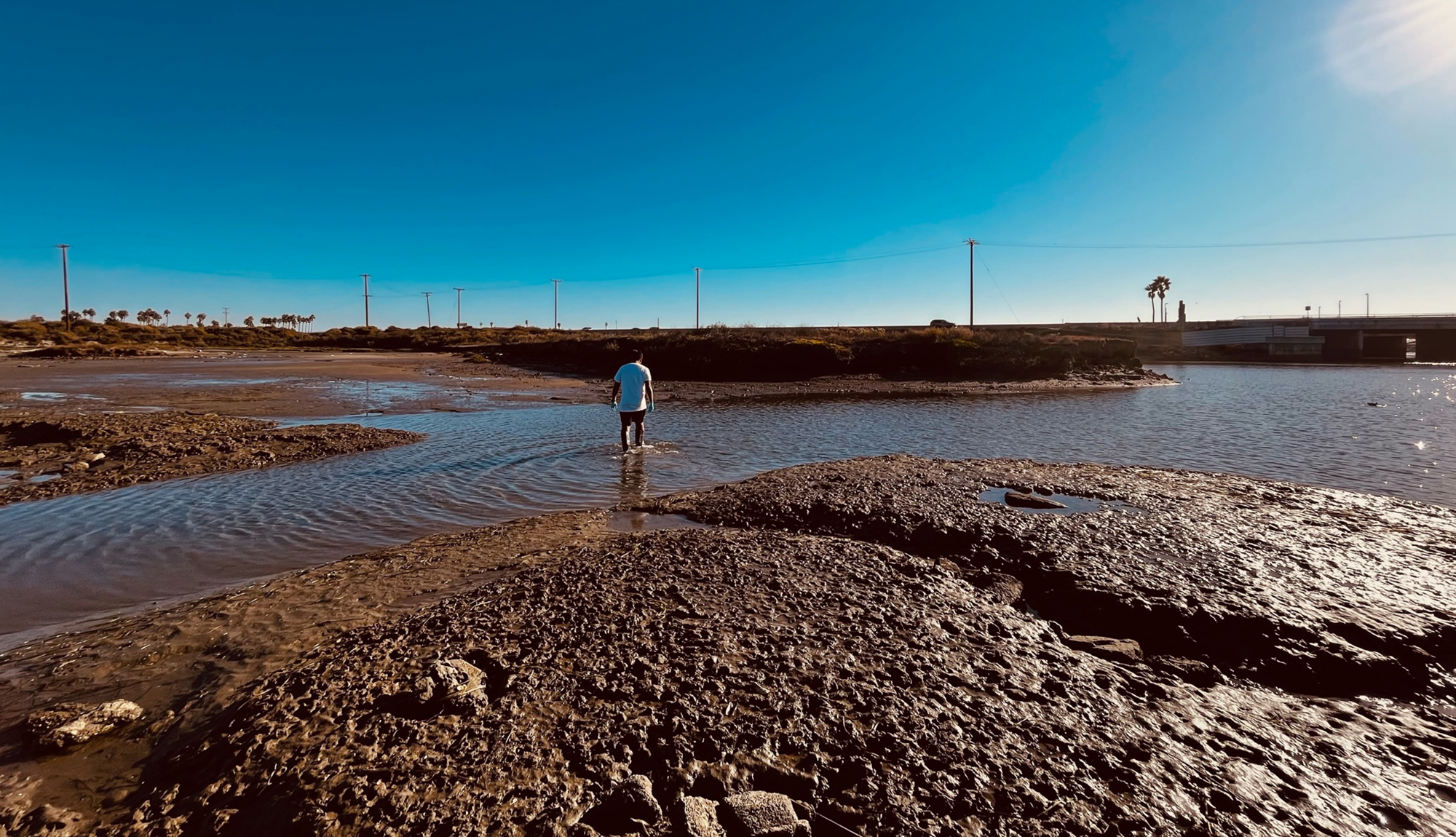Microbes in Oil Spills Provide Insights into Ecosystem Recovery, Study Suggests
In 2020, when researchers were just beginning to return to the lab after pandemic lockdowns, Earth scientist Roman Barco was interested in microorganisms called ammonium-oxidizing Archaea. The environmentally important microbes play a significant role in processing nitrogen into different forms in nature, and Barco was looking for a site where the microorganisms lived. He thought of the wetlands near Huntington Beach, where the brackish water might provide them a welcoming home, and reached out to the conservancy there. With their permission, he collected some samples.
The following year, on Oct. 1, 2021, tragedy struck the area: A damaged pipeline connecting an offshore oil rig with the shore ruptured, pouring 25,000 gallons of crude oil into the ocean. Large amounts of oil seeped into saltwater marshes near where Barco, assistant professor of Earth sciences at the USC Dornsife College of Letters, Arts and Sciences, had been working the previous year.

Barco saw the news of the spill, and though dismayed by the disaster, he immediately realized the potential for science. After all, he already had samples from the area.
So he contacted John Villa, the director of the Huntington Beach Wetlands Conservancy, and asked for permission to collect more samples after the spill. He knew it would be valuable to compare the samples from 2020 with samples taken after the spill and understand what was happening to the microbial communities in the wetlands.
Barco received permission and collected samples right away — and then returned a month later, a year later, and two years later. He’s collected more than 100 samples already with the help of PhD student Juliann Panehal, former PhD student Celeste Lanclos ’23 and biochemistry graduate Zachary Pifer ’22.
Now, supported by a grant from USC Sea Grant recently awarded to Barco and the late Jan Amend, professor of Earth sciences and biological sciences, Barco will analyze the samples and continue to study the area to understand how microbes can be an indicator of overall ecosystem health. The funding will allow him to continue monitoring the site until 2026.
Oil spills are tragically common: The National Academy of Sciences estimates that more than 1 million metric tons of oil are spilled annually into the world’s oceans. And while it’s easy to see — and feel — the impacts of these spills in the short term, it’s much more difficult to understand how they affect ecosystems over the longer term. Since no one knows when a spill is going to happen, it’s impossible to plan a scheduled sampling campaign. So researchers often leap at opportunities like the one Barco saw, a living laboratory with pre-spill samples already preserved in the freezer.
“With few exceptions, there’s really not that much that has been done in the past few decades in terms of microbiology and how these types of datasets could be used to help assess restoration or impact on the environment,” says Barco. “And technologically speaking, we’re at a point where this could be done more regularly and in a cost-effective manner.”
There was another, even larger oil spill that impacted the same wetlands in 1990, Barco explains, but back then the technology didn’t exist to study its effects on the microbial ecology in depth. In addition, significant microbial work was done after the Deepwater Horizon spill in the Gulf of Mexico in 2010, but the environment of Southern California has largely been unexplored in terms of oil spills.
Now, Barco plans to document the microbial community in the wetlands using genomic, transcriptomic and proteomic methods — techniques that examine the DNA, RNA and protein of microbes — to analyze the sediment and water samples he collected prior to, during and following the spill. He has been collecting samples called sediment cores using cut off syringes and filtering water to study.

“Right now, we’re interested in just extracting as much biological material as possible,” Barco explains.
Understanding the microbial community and seeing which are present after a spill can help future decision-makers understand how much a spill disrupts the environment. It’s another way of measuring the habitat, Barco says, in addition to chemical analysis or surveys of fauna, or satellite imagery.
While humans can only breathe oxygen, different microbes can respire compounds like nitrogen or even metals. Looking at what microbes are there can give a sense of how they are degrading the remaining oil in the presence or absence of oxygen, giving clues as to which strains can degrade oil so researchers can cultivate them for further physiological studies.
Barco hopes the work will lead to a better understanding of recovery after a spill. One current question is how to know when the ecosystem is back to normal. Looking at oil on the surface of the ground can’t offer that view, but this research can give a different view of what’s happening inside the system.
“Because present methods are highly sensitive, you can get a pretty good idea when things have gone back to conditions as they were before the oil spill. That monitoring and assessment is something we hope we can help based on the results that we get.”

